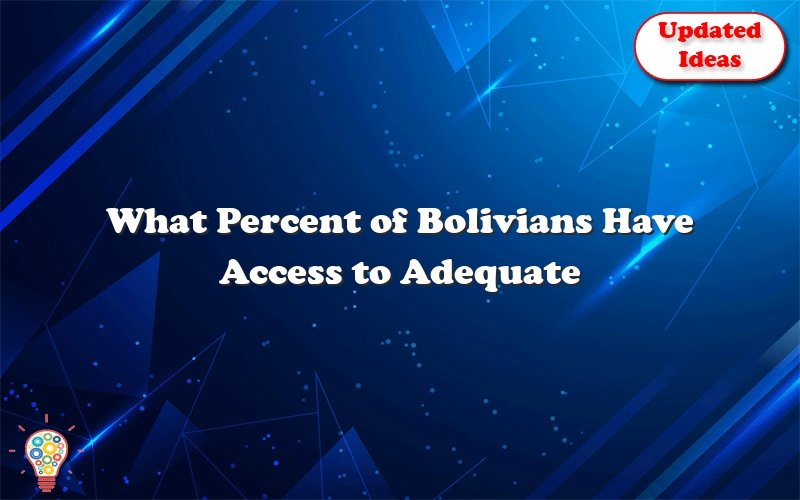What percentage of Bolivians have access to health care? This question is a complex one. During the mid-1990s, the country’s health care budget was over three times what it is today. This increased the health status of the population and decreased the incidence of child malnutrition by fifty percent. However, the majority of the country’s population still lives in rural areas, where health clinics are scarce and poverty is much higher.
Since the Unified Health System was implemented in 2019, citizens of Bolivia have been guaranteed basic medical care. Law 1152 guarantees that every Bolivian will have access to basic medical care. This plan covers many costs associated with healthcare, including medication. The government is still unsure about exactly how much this new program will cost, but the first year of coverage should see an improvement in health status for all citizens.
The government responded to this crisis by implementing a Community Involvement Act. The law transfers ownership of local service infrastructure to municipios and provides funding based on population and per capita. The Act also requires that municipios create and implement plans for economic and social development. This includes the creation of health clinics. The government also promises to provide more medical attention and services for its citizens.
The health system is a key element of the government’s development. The government has made significant investments in the healthcare sector, constructing 2,710 clinics that provide medical aid to 25% of the country’s citizens. The government is not only providing health services but also focusing on education and preventive care. The Bono Madre Nino-Nina Juana Azurduy program promoted safe motherhood by providing cash to pregnant women and providing free screenings for pregnant women. The Zero Malnutrition Multisectoral Program also helps to combat malnutrition in children under 5.
In the mid-1980s, the country’s health indicators were among the worst in the Western Hemisphere. Life expectancy was the lowest in the world, and infant mortality ranked third, behind Haiti. The country’s rural population was particularly low. By contrast, the urban and suburban areas had greater access to healthcare than rural areas. This is why it is so important to improve healthcare in the country.
As of 2019, 85% of Bolivian citizens have access to adequate medical care. The country’s Unified Health System, also known as the Unified Health System, ensures that all citizens of Bolivia have access to medical care. In the 1990s, the uninsured population was at their lowest point. A significant portion of the population wasn’t even covered by health insurance. A quarter of the population could not access clean water and sanitary facilities.
The Bolivian health system is fragmented with many providers and institutions. Three major topographies are present: highland plateaus (25%), valleys (15%) and plains (15%), which make up the rest of the country. The population of Bolivia consists of mountainous regions and plains, with an emphasis on the eastern plains. In addition, there are nine departments in the country, each of which is governed by a minister of health.
In the mid-1980s Bolivia’s health indicators were amongst the worst in the Western Hemisphere. The average life expectancy in Bolivia was 37 years. Peru and Haiti had the highest infant mortality rates. Despite this, 70% of the population did not have access to health care. The country’s geography contributed to the poverty in rural areas. The majority of the country’s population didn’t have access to clean water or sanitary facilities and did not have access for doctor visits.
Nonprofit organizations play an important part, in addition to the government’s responsibilities. These organizations provide basic medical supplies as well as support for rural people with disabilities. These efforts have helped more than 200,000 Bolivians, and they are expected to continue to grow over the next few decades. Although there are many health-related non-governmental organizations in Bolivia, their reach is limited. They tend to work in the poorest areas of Bolivia, with the majority of their work concentrated in rural areas.

